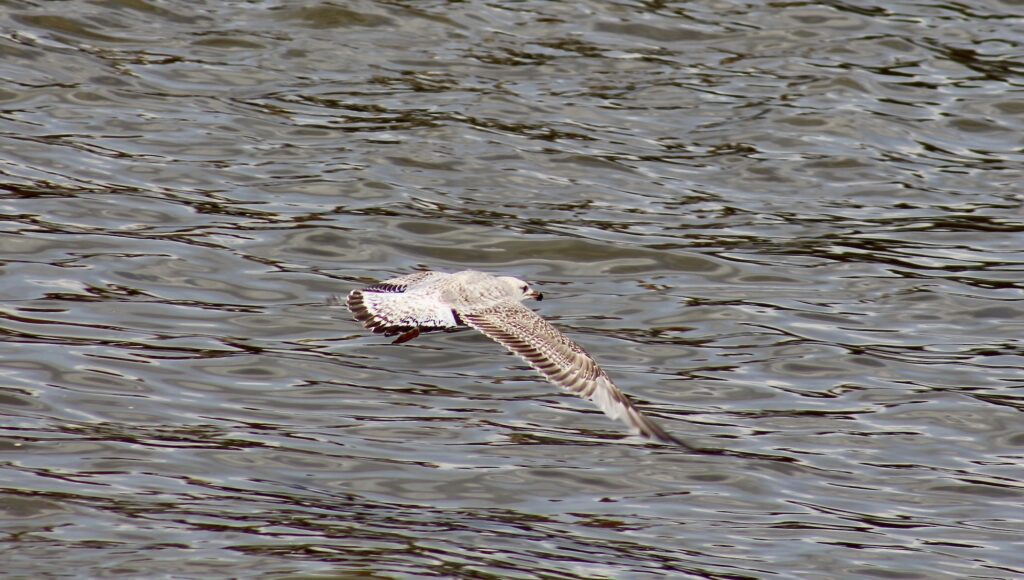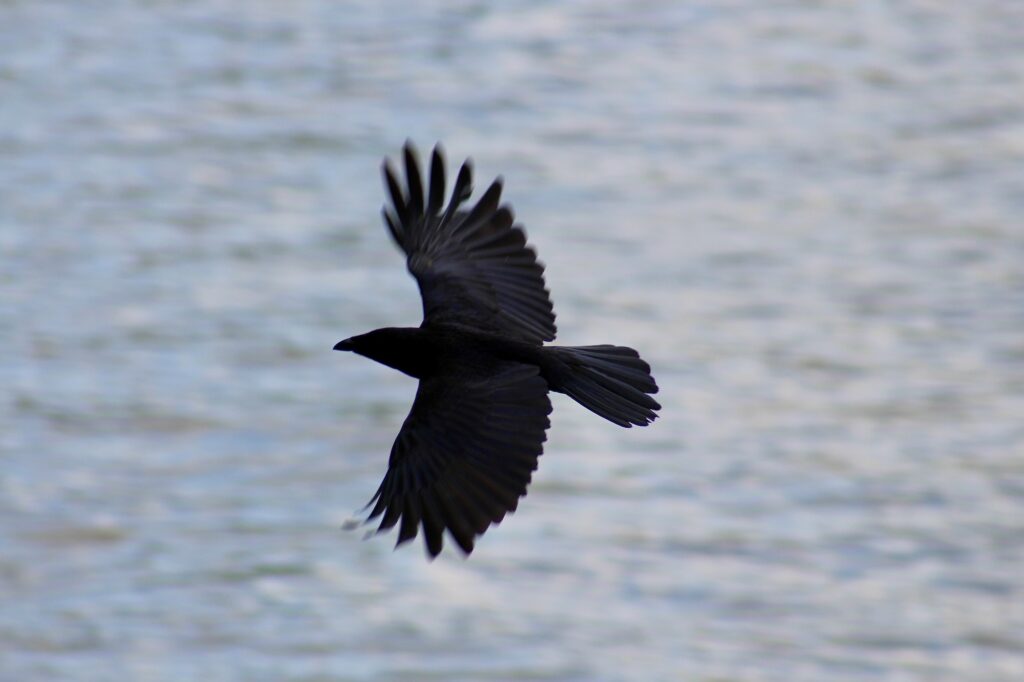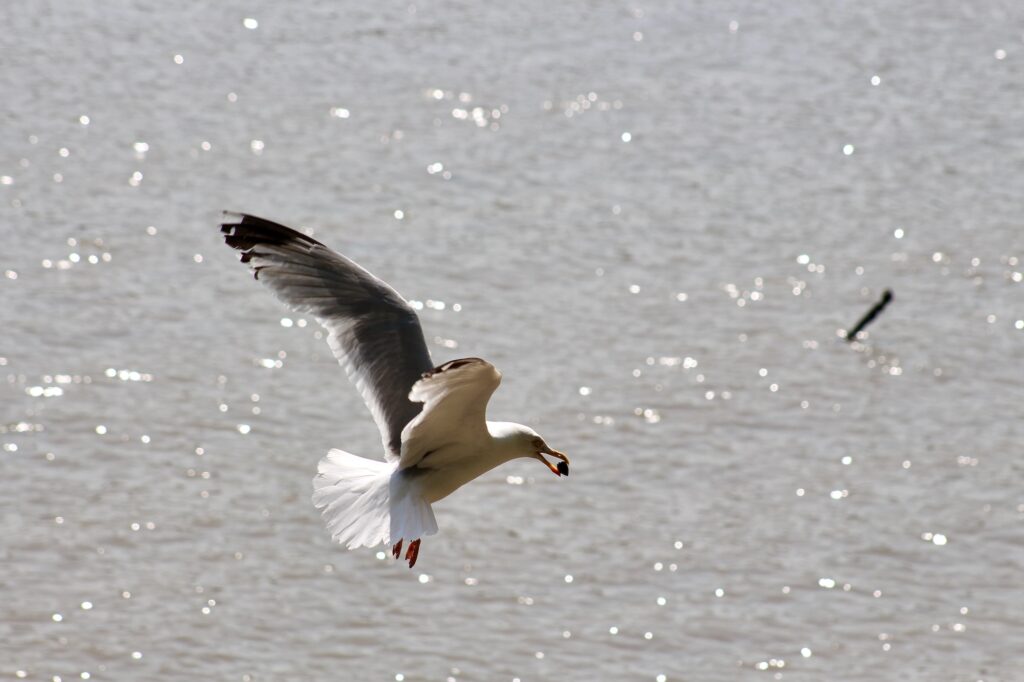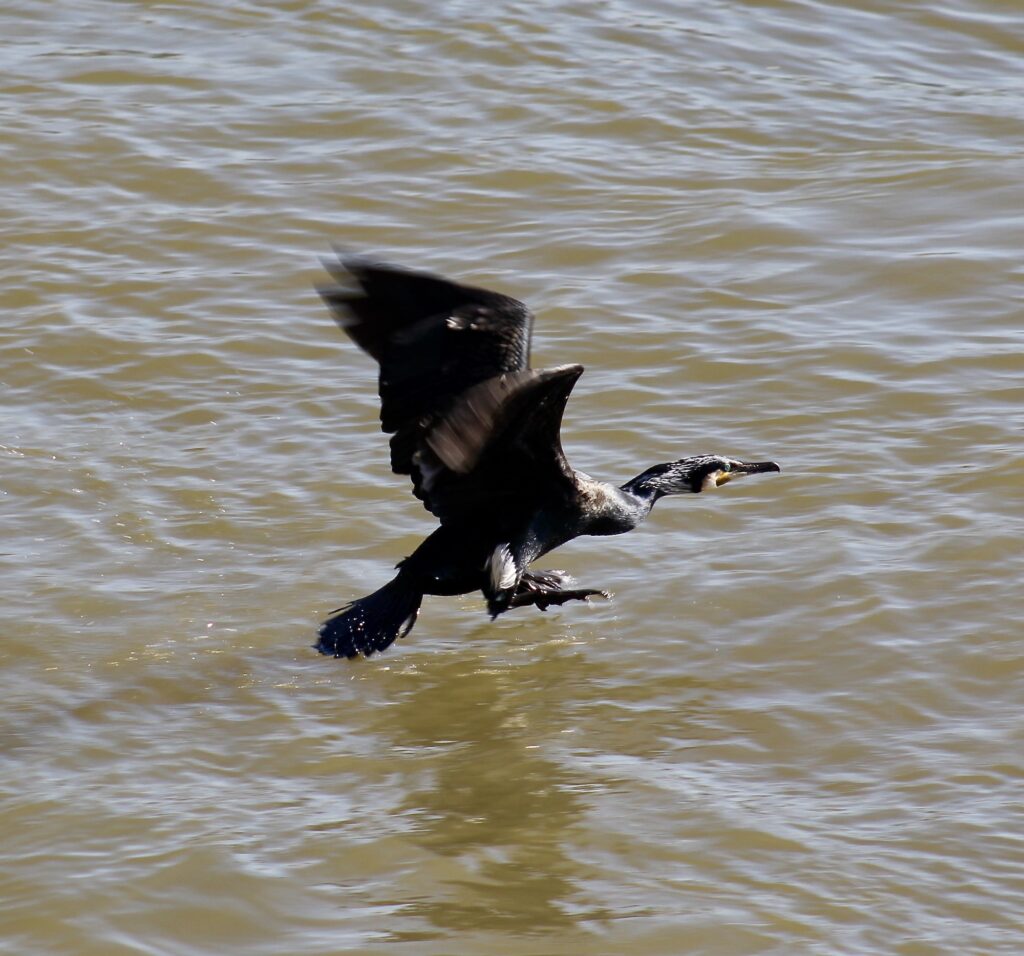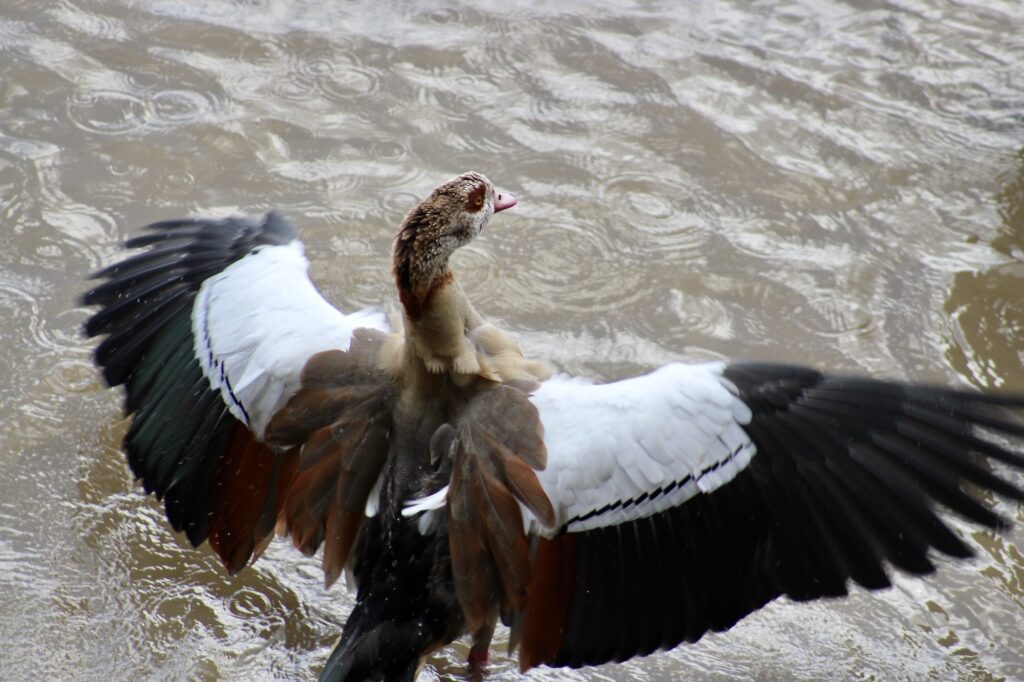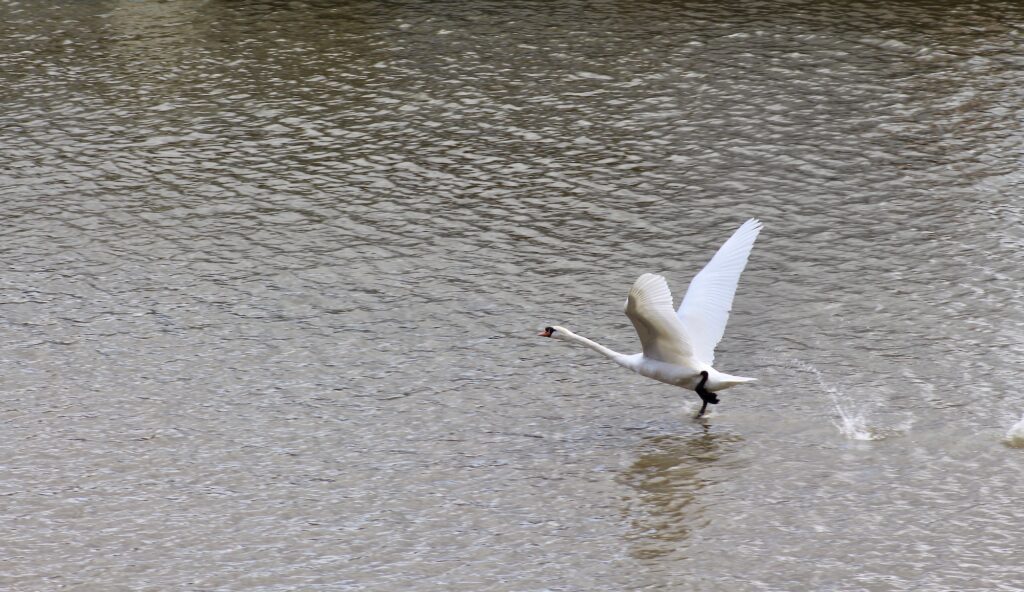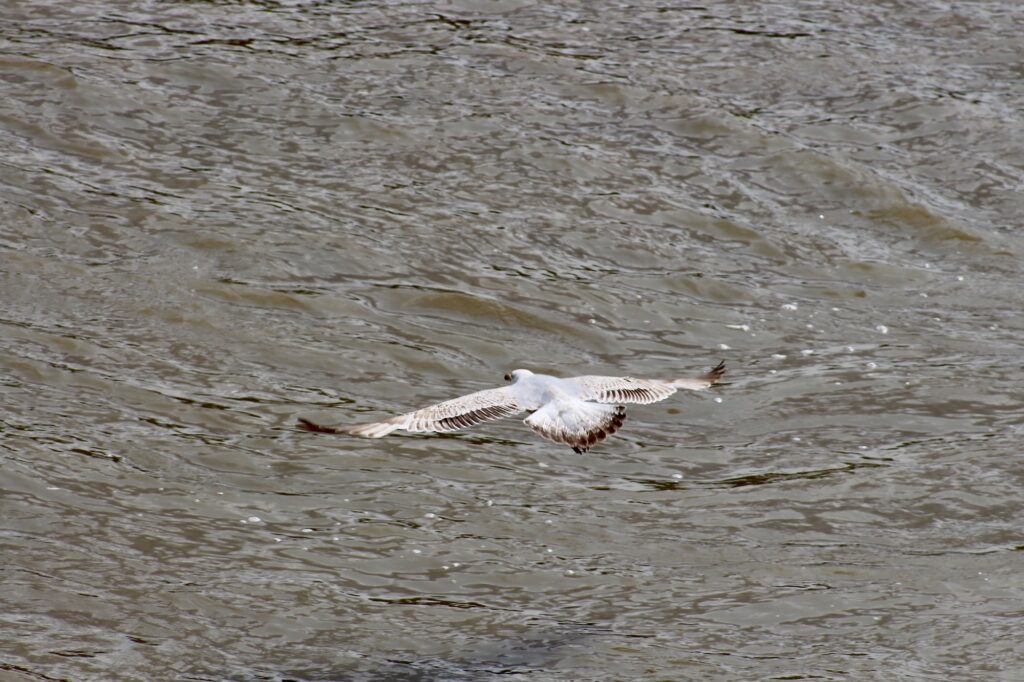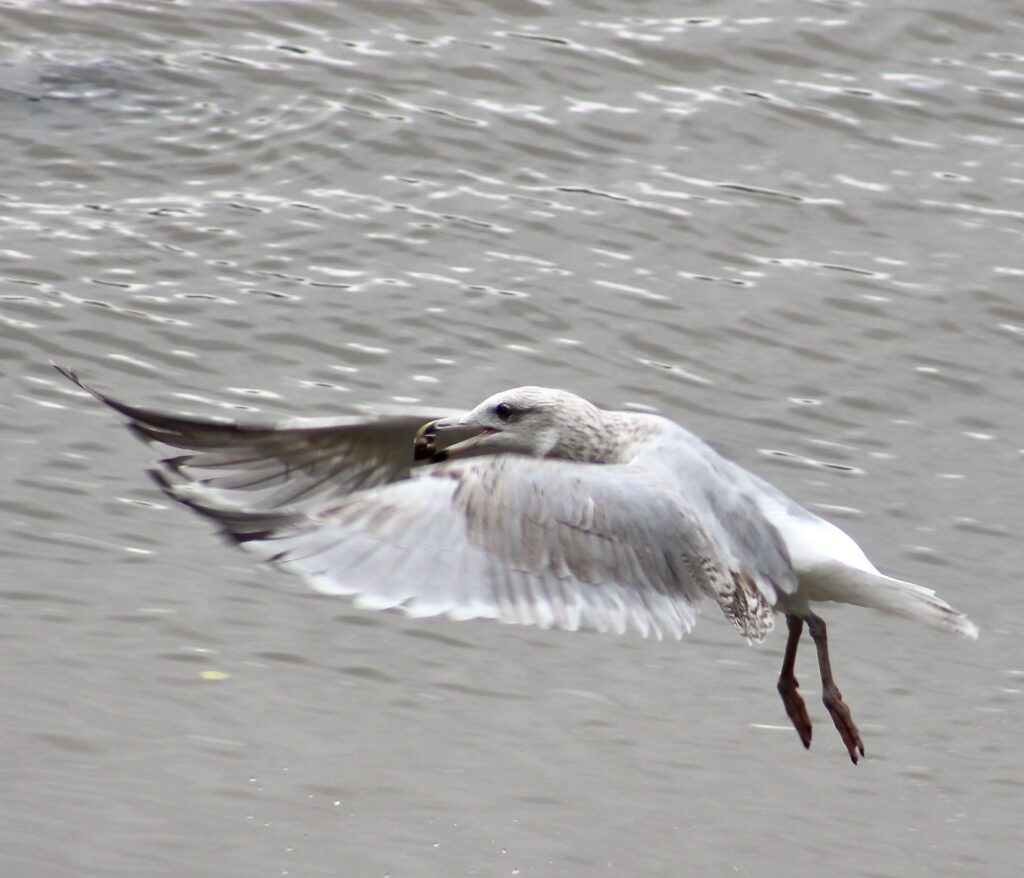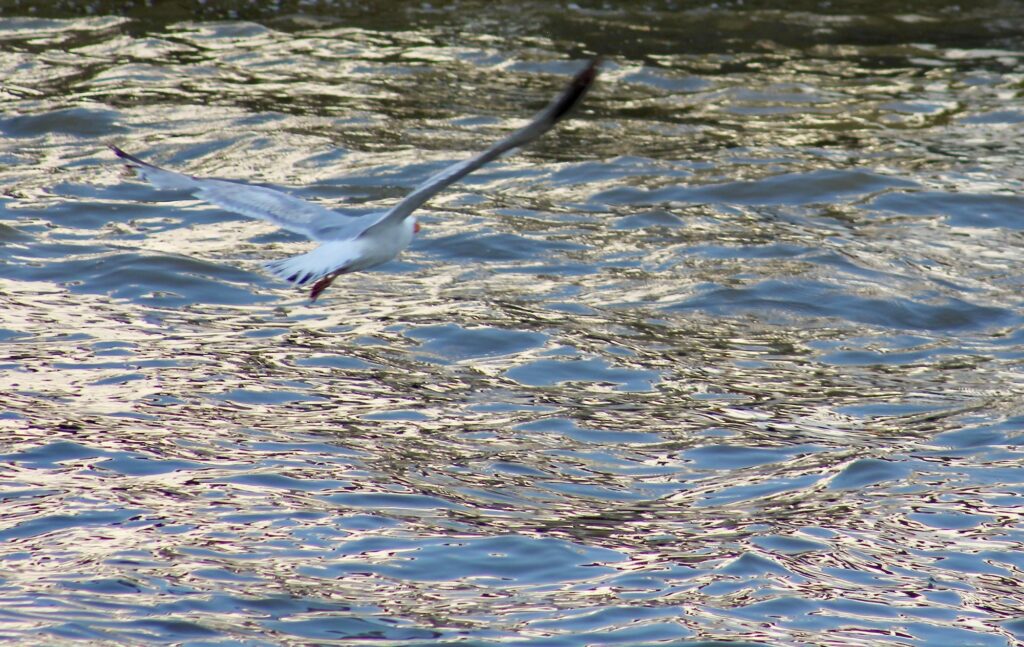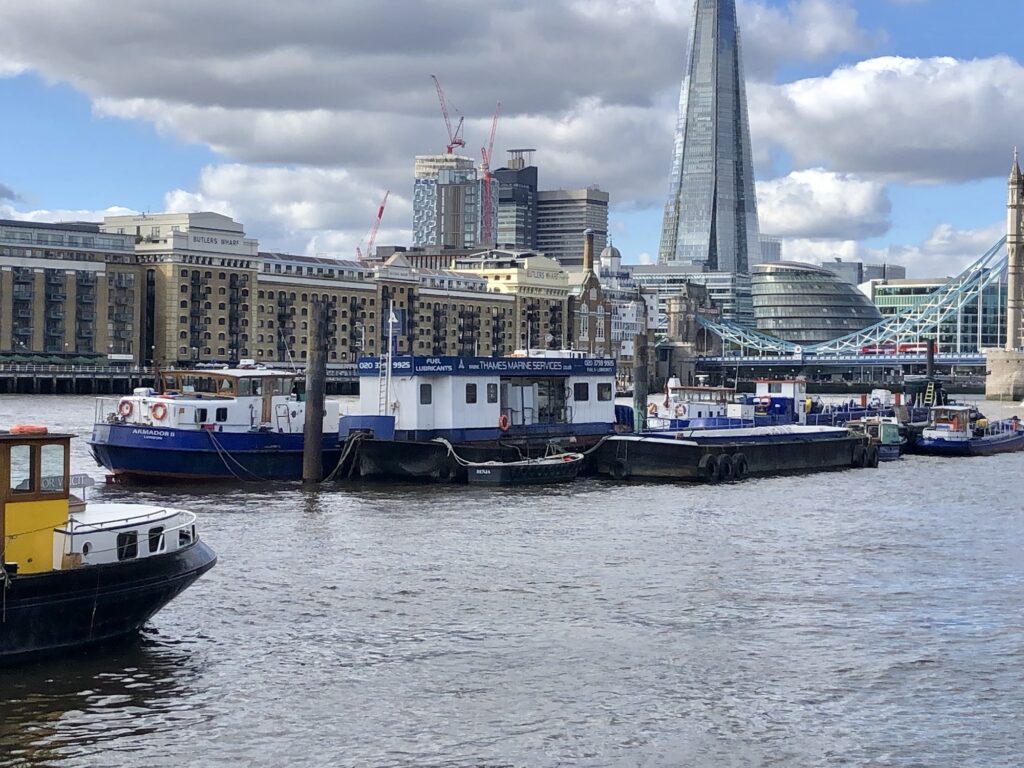
If you’ve spent any time walking beside the central London Thames you will not fail to have noticed the bright blue and white boats of Thames Marine Services Ltd. Their fleet of tankers supply fuel to both large and small ships and commercial companies, along with private boat and houseboat owners.
If you walk along the Albert Embankment, or by the river in Victoria Tower Gardens, you will have seen Thames Marine Services’ static refuelling barge, Thames Refueller, in its blue and white livery. Set against set against the heart-covered National Covid Memorial Wall, its view across the river is a real picture postcard of the Palace of Westminster.
Their high profile base at Wapping includes their second static barge and moorings for their fleet of four fuel tankers: ARMADOR II; HEIKO; CONQUESTOR; and GOSSO.

Over the past few years I’ve been able to photograph their boats in action as they go about their business on the river and I’ve been kindly helped with this article by Nicholas Dwan – Nick -, whose family has had links, one way or another, with the Thames for many generations.
Thames Marine Services was first set up as a fuel delivery service by brothers Robert and Nicholas Dwan in 2015, which expanded into the sale of lubricants, the provision of crewing services, mooring, and engineering services as well as a waste oil removal facility. You can see their website here: Services and specifications of each of their boats here: Fleet
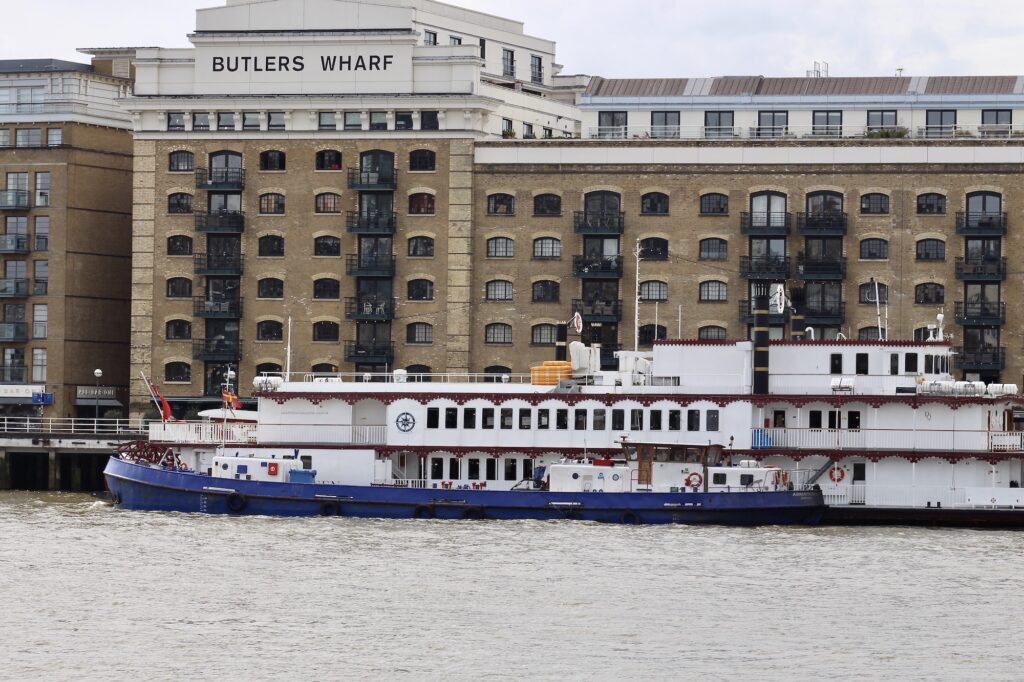
My only sightings of ARMADOR II have been of her at work near and around Tower Bridge. In the photo above she is supplying Thames Luxury Charters’ impressive replica paddle steamer DIXIE QUEEN.
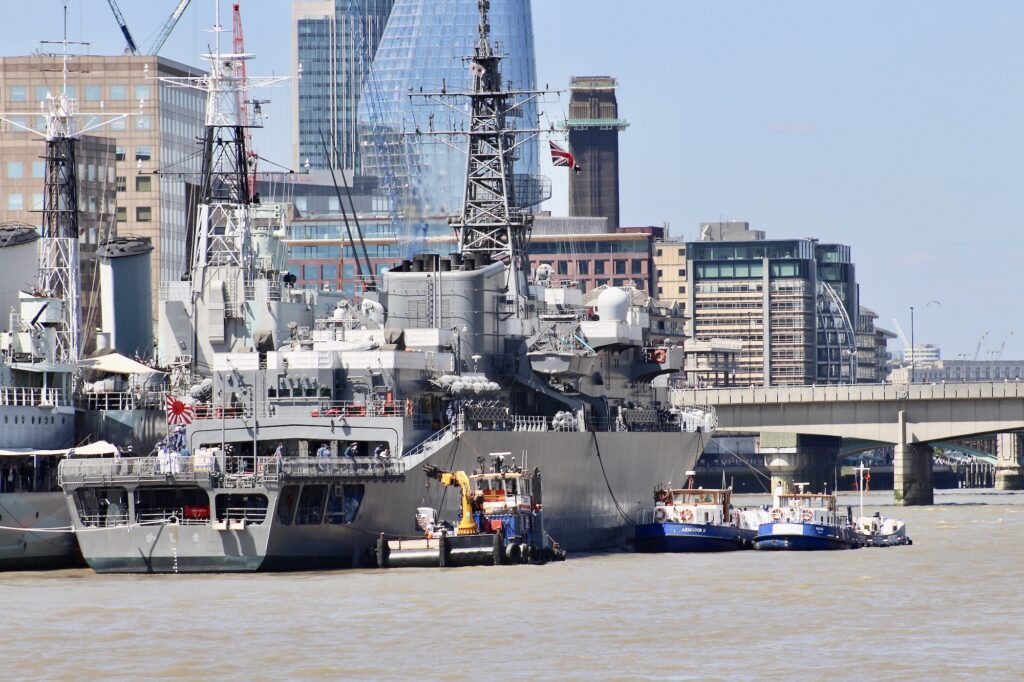
In the picture above, ARMADOR II is among those attending to the needs of visiting Japanese training vessel JS KASHIMA, June 22, 2022.
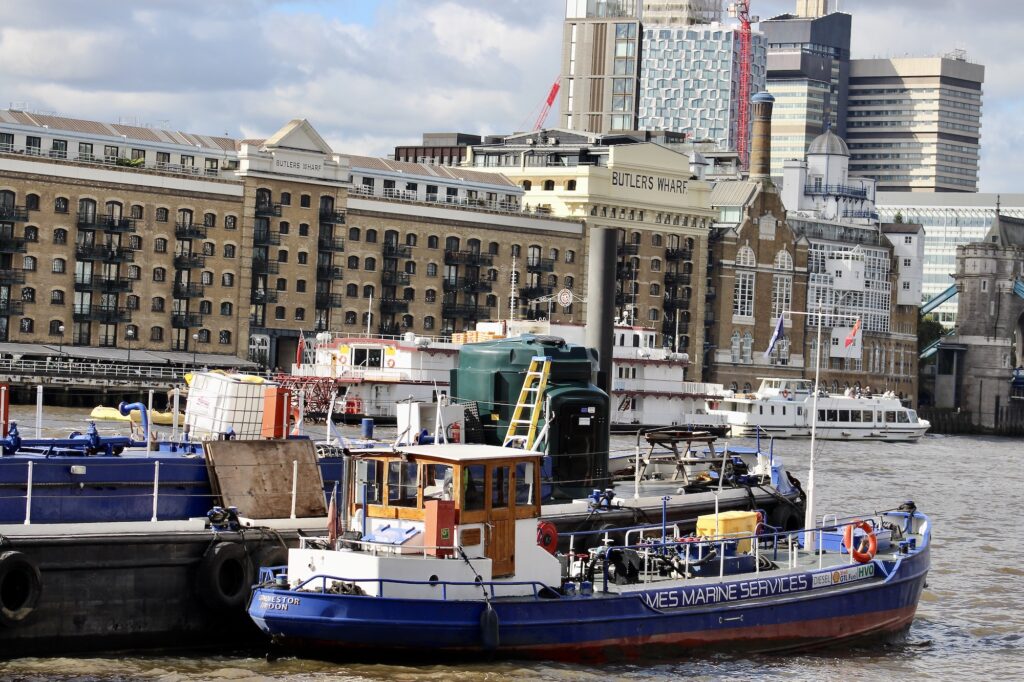
CONQUESTOR is a frequent visitor to Lambeth Reach and beyond.
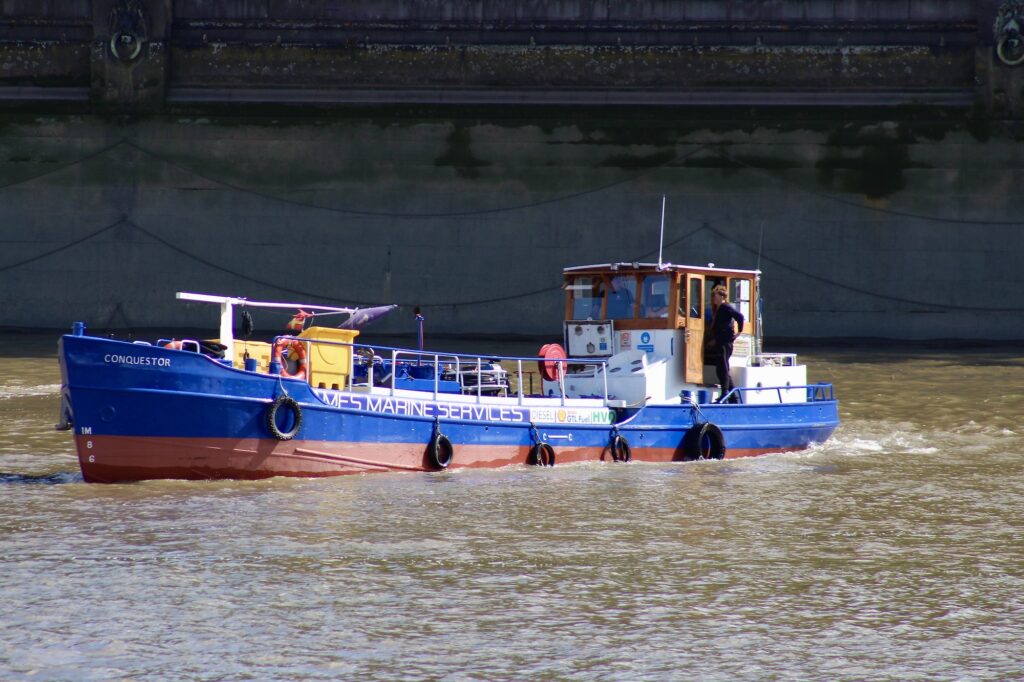
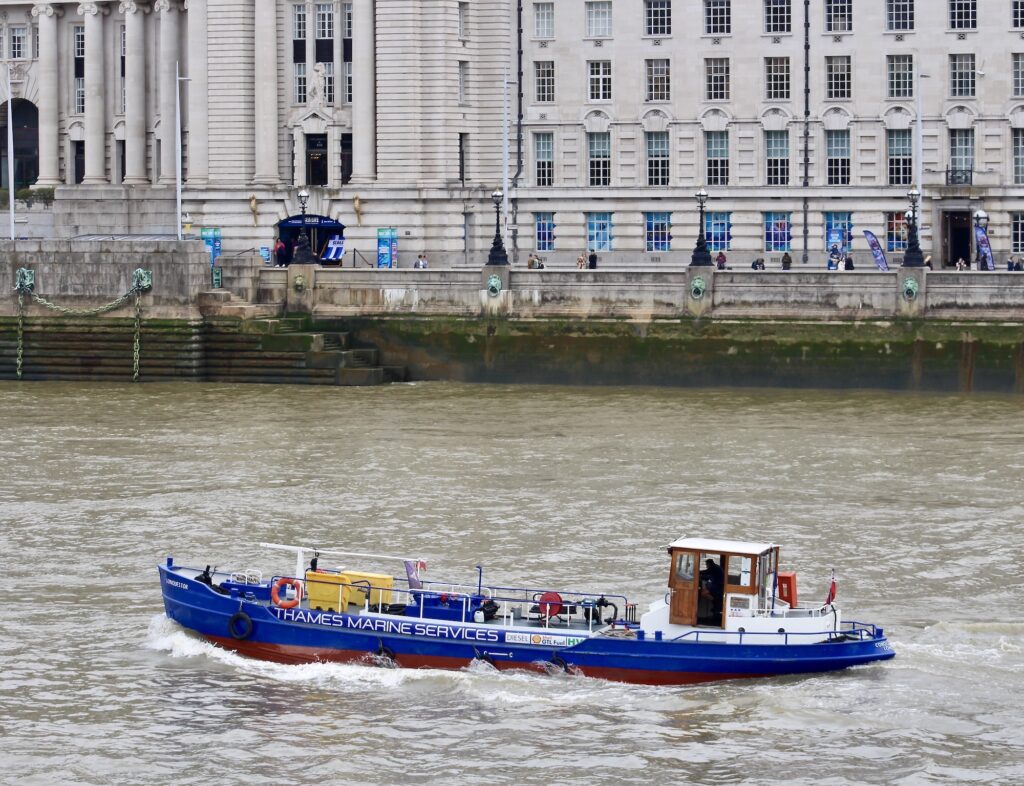
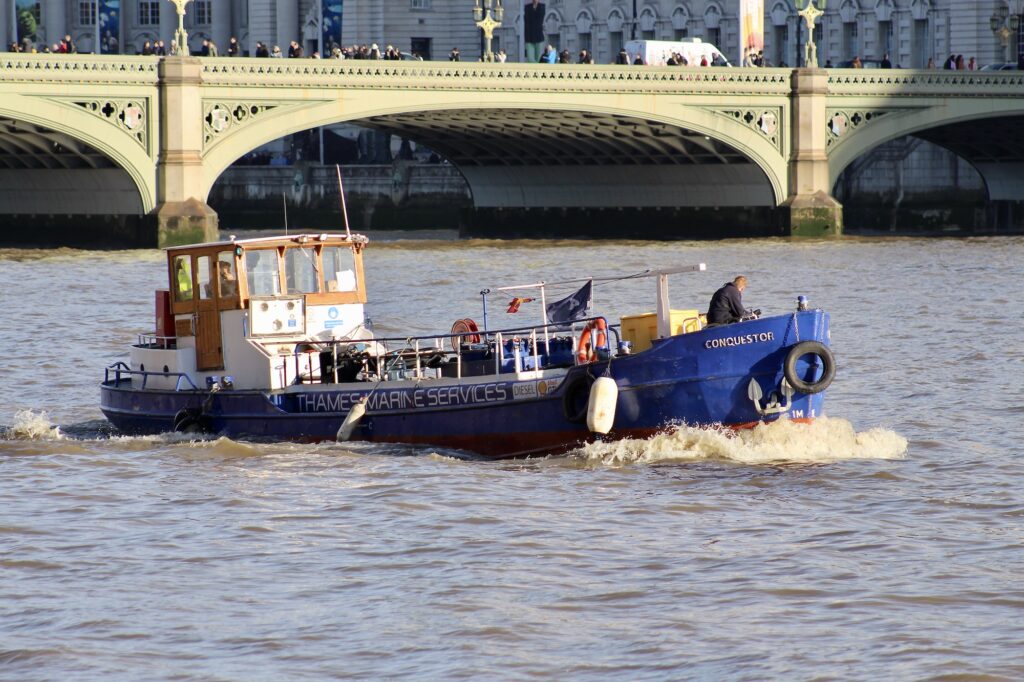
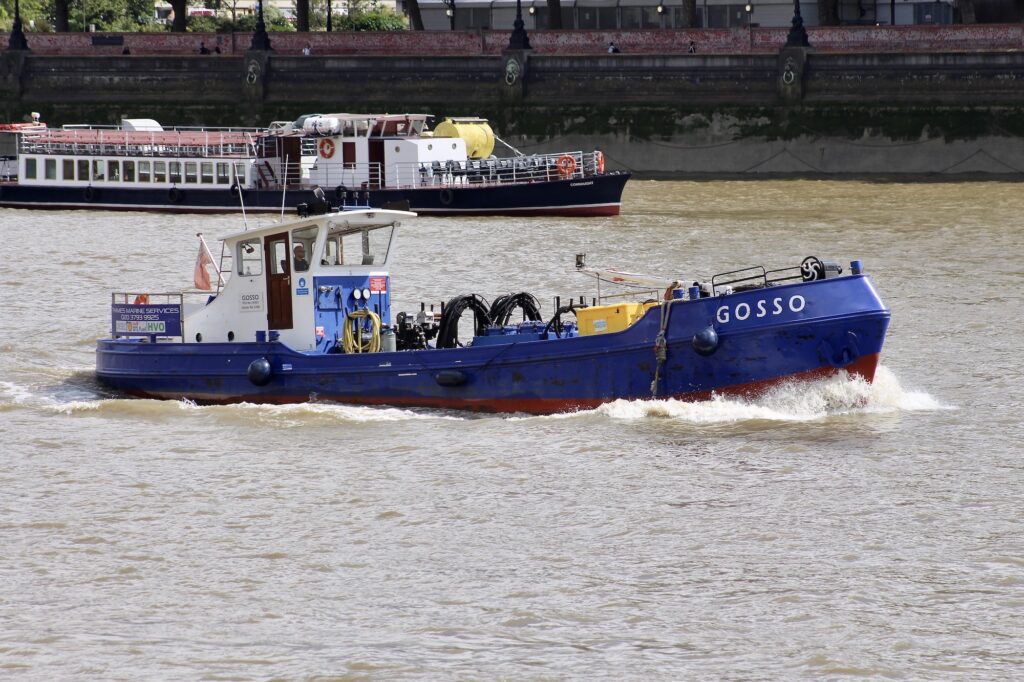
I was intrigued by GOSSO’s name and Nick Dwan told me that she was “named after his great grandfather Ted Gosso Williams.” adding that “He was a real character working along the Thames in sailing barges, tugs, and passenger boats.”

Nick kindly gave me permission to use the following pictures of his great grandfather, which are now part of Thames history.

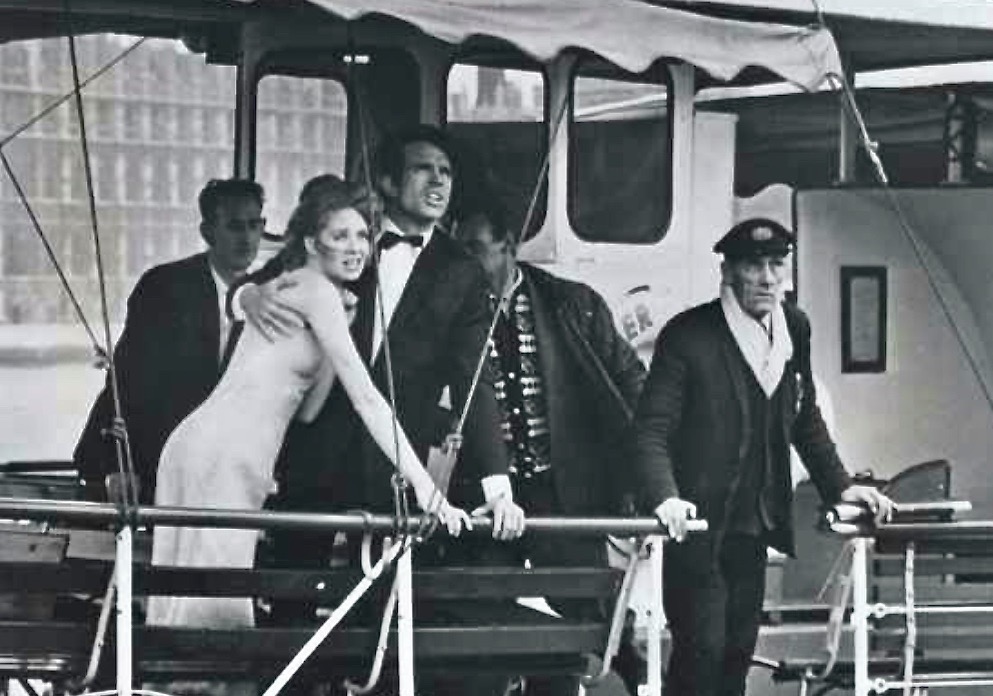
Ted Gosso Williams was Captain of the TOWER BELLE for many years and, Nick tells me, “though he was meant to be doing the Tower to Westminster service, on Doggett’s day, being a great fan of the race, he would follow it with enthusiasm.” Nick paints a picture of hilarity in the pub where his great grandfather took the stage: “He was known for sitting on the floor pretending to take part in the race while doing a commentary. Then someone would shout ‘there’s a wave coming in Gosso’ and chuck a pint over him.”
And the Doggett’s, full name ‘The Doggett’s Coat & Badge Race’, is very much part of Dwan family history. Open to recently apprenticed watermen, raced in single skulls between London Bridge and Cadogan Pier every year since since 1715; it’s a real test of skill, endurance, and knowledge of the river’s complexity.
The two directors of Thames Marine Services, brothers Robert and Nicholas Dwan, each won this arduous race in their respective years. Yet that’s not all. Nick gave me a full list of the family’s achievements saying that they now have the most living Doggett’s winners beginning with his father: Ken Dwan (1971); John Dwan (1977); Nicholas Dwan (2002); Robert Dwan (2004); Merlin Dwan (2012); and then cousins Jack Keech (2017) and Patrick Keech (2019); adding that “we have another cousin, Alf Keech who is due to row in four years time”. And the family is not the Company’s only link to the race: two of their Captains are also Doggett’s winners. Harry McCarthy, from a family of Watermen including previous winners, won his race in 2014, and Max Carter-Miller won his race in 2021.
The HURLINGHAM, was Ted Gosso Williams’ last post as Captain after a long and varied career on the Thames, but his name lives on in this bright, blue boat GOSSO, often to be seen fulfilling orders along the river.


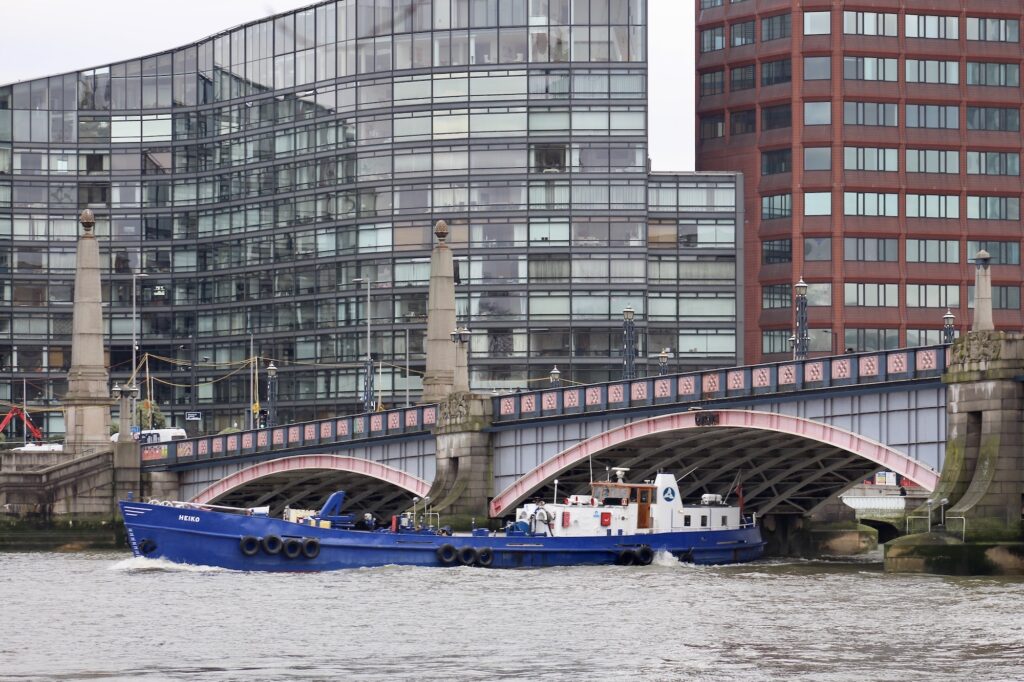
Doggett’s winner in 2014, Harry McCarthy joined Thames Marine Services in April 2016. An experienced Captain he works with ARMADOR II, CONQUESTOR, and HEIKO.
In August 2019, skilled manoeuvring by HEIKO’s captain, and swift action by the crew, saved a swimmer from drowning in the Thames. See film of the rescue here.
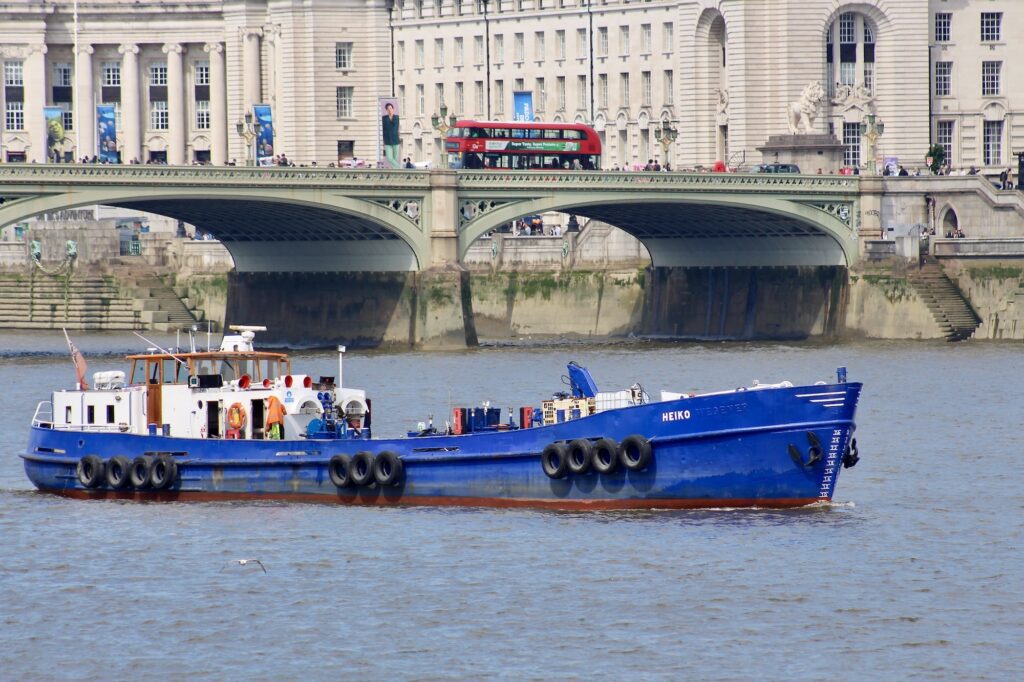
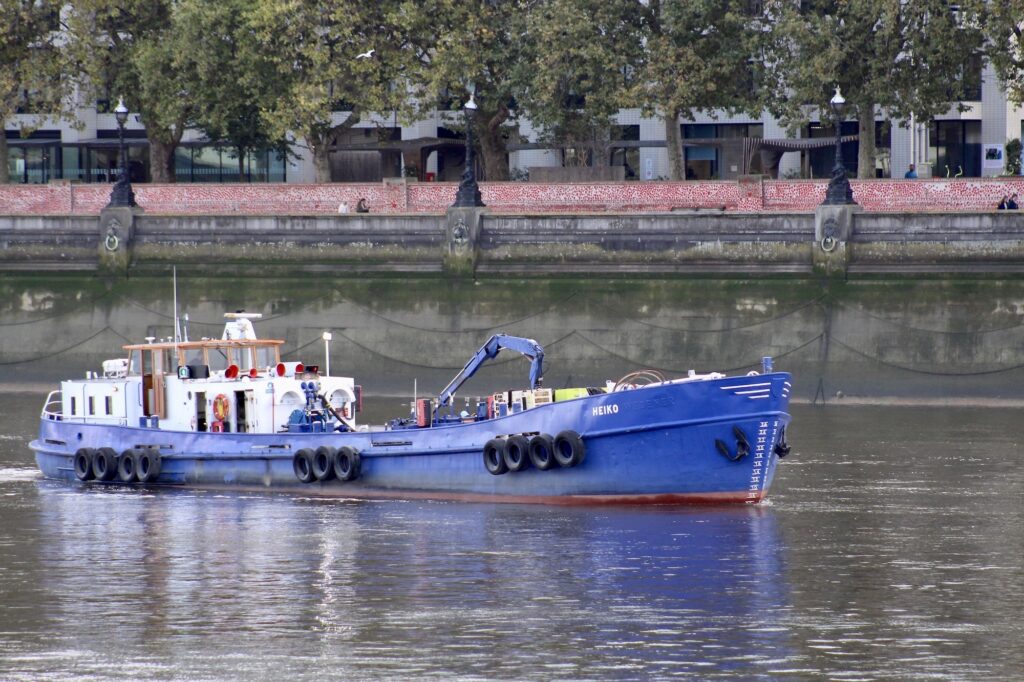
Max Carter-Miller, who won his Doggett’s Coat and Badge race in 2021 is now Captain of HEIKO.
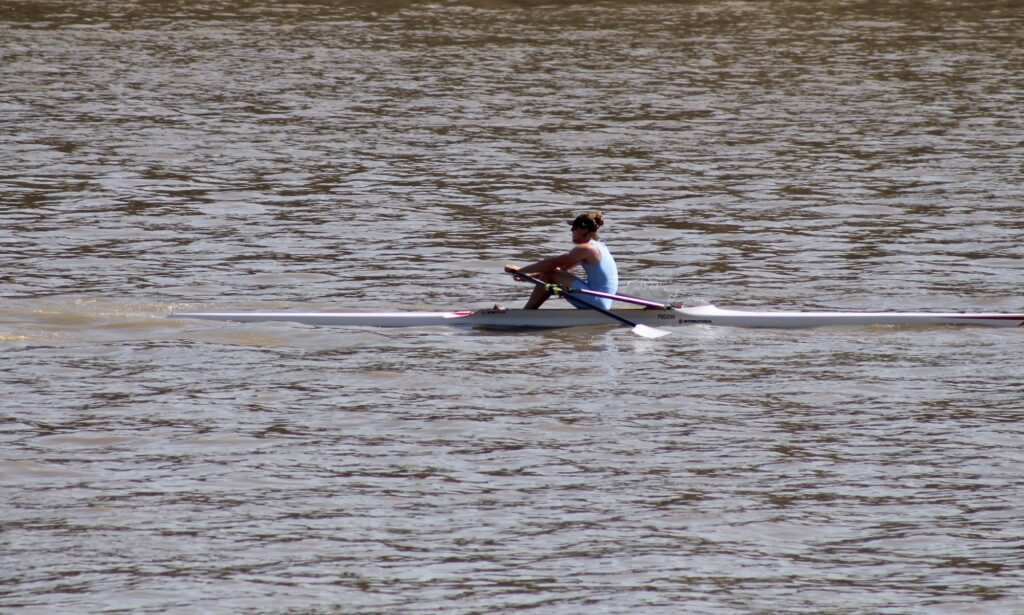
Max Carter-Miller joined Thames Marine Services in 2017 as an apprentice waterman. In 2020, he completed his apprenticeship and was then eligible to take part in the Doggett’s Coat and Badge race, winning on his second attempt in 2021.
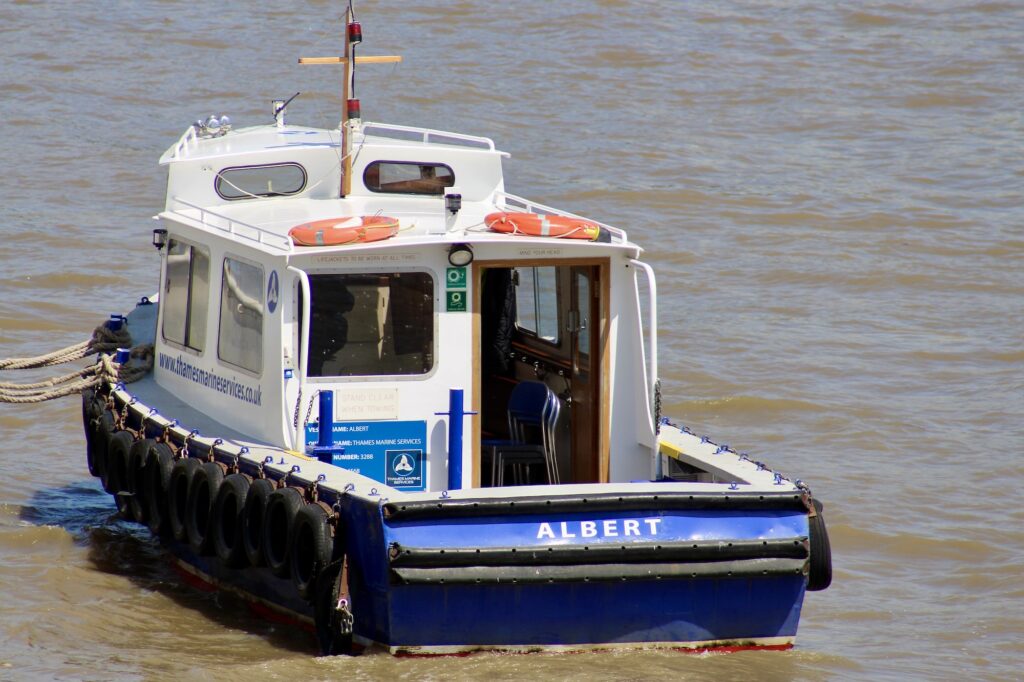
Nick Dwan also told me the story of ALBERT now, as you’ll see in the picture below, re-named ALB-E and converted to be fully electric.
The boat is named after his grandfather, Albert Dwan, “who in the 80s used to run her around for a catering company based at Lambeth Pier, called Fitzrovia Catering and at that time she was called Bread Run. She would run between all the party boats delivering their food and then in the mornings, go round collecting all the dirty plates and catering equipment.”
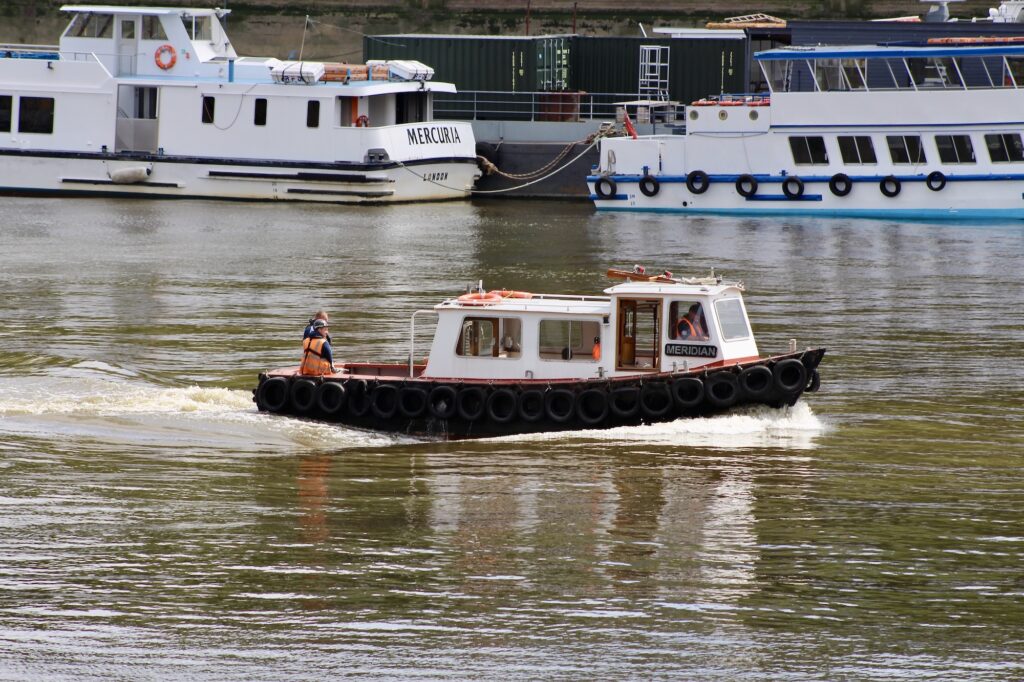
“The boat then passed on to Dave Gilby who ran his marine Electrical business from her. From there she passed to Livett’s Launches, who renamed the boat MERIDIAN, and used her as a safety boat, diving boat and camera boat for filming.”
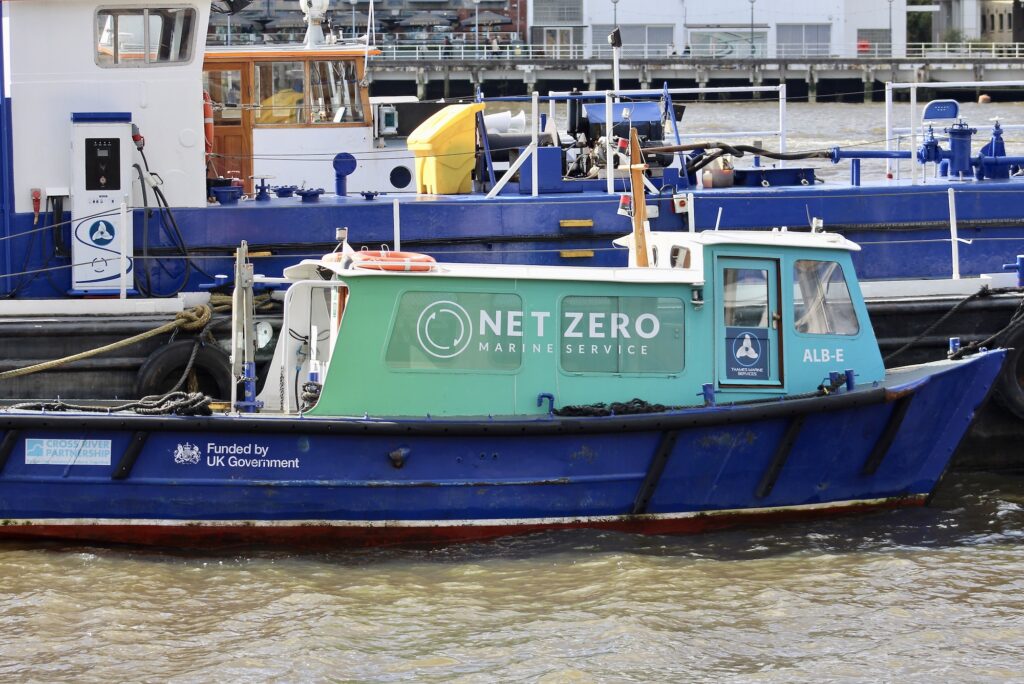
In August 2023, Thames Marine Services bought two bunker barges from Thames Fuels Ltd: HELENA and KAROLIEN, now called KARO and converted into a “black water and sewage disposal barge.” I caught KARO on Lambeth Reach in April this year but have yet to see HELENA in her new livery.


The Thames Marine Services’ fixed barge, Thames Refueller, at Westminster, has exceptional views of one of London’s most famous buildings and is well placed for boats needing supplies all along the tidal Thames.
Covering the Thames from Teddington to the Estuary, taking in Sheerness to Strood on the Medway, the company has a strong, eye-catching presence on the river and it has been interesting and a pleasure to discover more about their work.
Sources and Further Information
With thanks to Nick Dwan for his help, his photos, and for sharing some Dwan family stories and history.
Thames Marine Services Ltd
The Doggett’s Coat and Badge Wager, 2021.
The Doggett’s Coat and Badge Wager, 2023.
Article on Ken Dwan, Nick’s father: At home on the Thames
The Liquid Highway Leading River Thames resource for latest news and info, with the worlds largest Thames vessel photo gallery.
* See Race for Doggett’s Coat & Badge
** Some of you who follow my social media accounts may have come across, and even smiled at, the saga of the “Yellow Deck Chair” on the Thames Marine Services’ fixed barge at Westminster. It’s still going…
